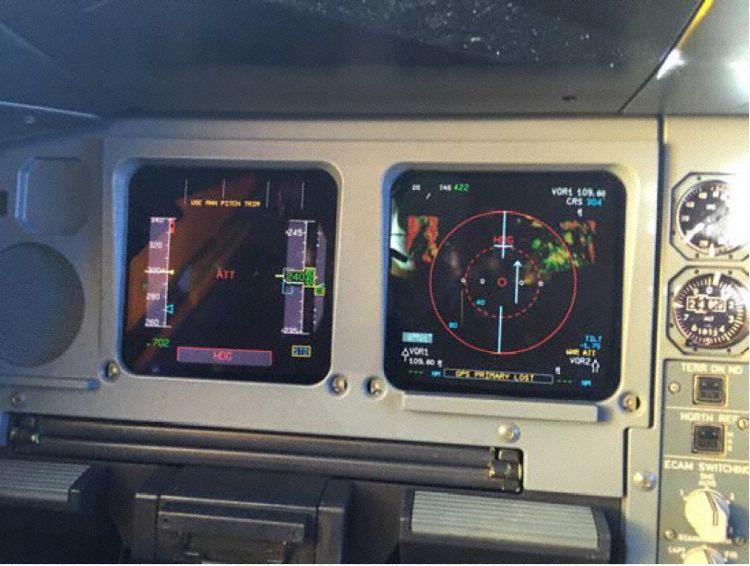Yes! More or less, it depends on your definition of failure (see later).
As you said, the probability that three Inertial Reference Units (IRUs) fail is extremely rare. This is because IRUs are self-contained, internal to the aircraft, and independents. Instead, air data probes are subject to ice and external factors (for instance, bird strikes), thus more subject to faults. The IRS failure probability is so low, that in the non-neo A320/A330 the ECAM message "TRIPLE IRS FAILED" doesn't even exist (it shows all the three messages: IR1+IR2 FAULT, IR2+IR3 FAULT, IR1+IR3 FAULT).
However, yes, it happened: This is a real picture of an A330-220 (F-GRSQ) flying at FL240 with all IRUs failed in 2014:

According to the BEA report of the F-GRSQ incident (published in 2018), only 2 triple IRU failures incidents in Airbus aircraft happened since 1999: this one and another one in 2002.
In both cases the reasons of the triple failure are unclear. However, the BEA report suggests that the triple failure was triggered by erroneous pilots actions responding to a single IRU failure. In the F-GRSQ the possible explanation is that the pilots identified IR2 drifting too much and decided to switch it to ATT mode (degraded mode, providing only attitude), but they erroneously switched IR3 to ATT. Hours later, when IR2 drifted too much, Autopilot and FBW computer detected the data inconsistency and started to consider IR2 as failed, while IR3 was in ATT mode (and then not used by AP/FBW). Probably, at this point, by following a non-standard procedure, the pilots tried to restart all the IRs to regain the position on Navigation Display, including the working IR1, which then lost alignment and caused the triple failure condition. Unfortunately, the lack of CVR recordings didn't allow the verification of this theory, but no malfunction was found in IR1 or IR3.
Why do commercial pilots keep ignoring the attitude indicators in case other instruments are assumed to have faults?
I don't think that pilots thought it was an IR problem in the sort of incidents you mentioned.

